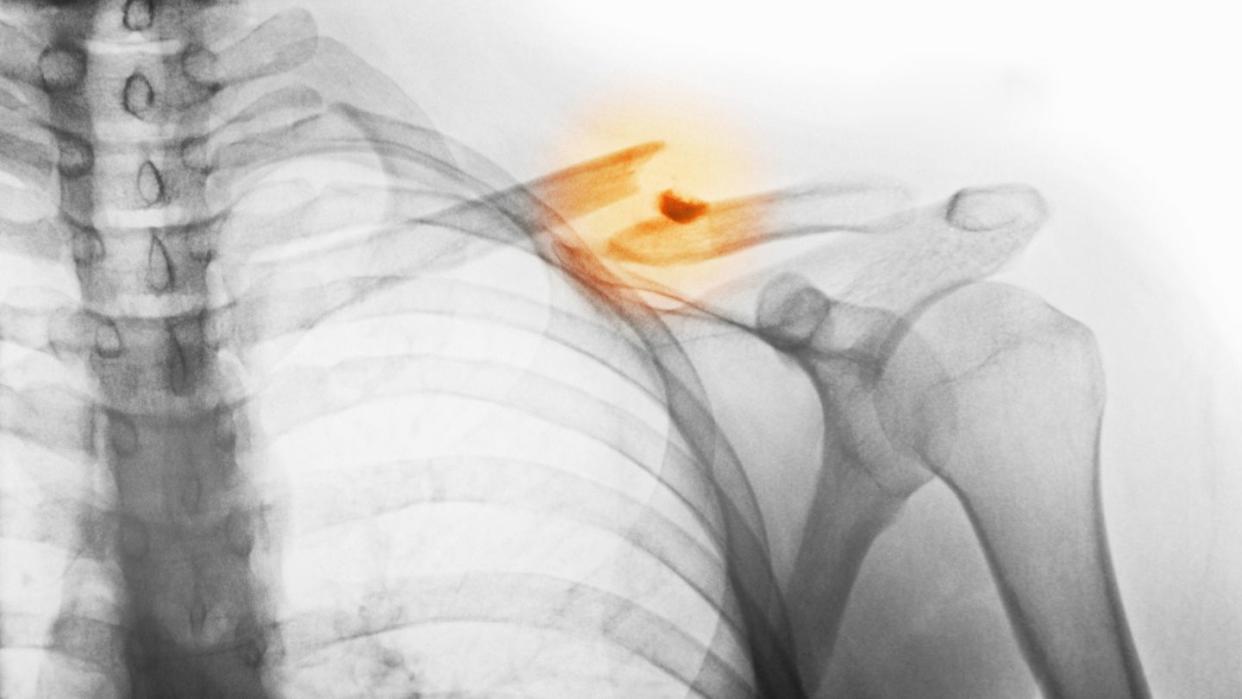A 2-Million-Year-Old Human Clavicle Just Took an Epic Trip to Space

The Virgin Galactic 03 space trip included some fossilized remains of ancient human relatives Australopithecus sebida and Homo naledi.
Passenger Timothy Nash brought the items, originally discovered in the Cradle of Humankind, as a tribute to early humans relatives.
The effort also highlights South African contributions to human archaeology.
When the private Virgin Galactic flight VSS Unity shot into space last month, it took with it a tribute to the “contribution of all human ancestors and ancient human relatives for their part in making the ultimate gesture of human exploration and technological advancement possible,” according to a news release from the University of Witwatersrand.
The VSS Unity had a pair of fossils tucked inside a carbon fiber container join the journey.
Timothy Nash, one of the passengers on the flight, had partnered with the University of the Witwatersrand in South Africa to bring a fossilized Australopithecus sediba clavicle (estimated to be up to 2 million years old) and a Homo naledi thumb bone (potentially 250,000 years old) to space. Both fossils, discovered within the Cradle of Humankind UNESCO World Heritage site just outside of Johannesburg, South Africa, represent ancient human relatives.
“The journey of these fossils into space represents humankind’s appreciation of the contribution of all of humanity’s ancestors and our ancient relatives,” Lee Berger, Carnegie Fellow and director of the Centre for the Exploration of the Deep Human Journey at the University of Witwatersrand, said in a statement. “Without their invention of technologies such as fire and tools, and their contribution to the evolution of the contemporary humankind, such extraordinary endeavors as spaceflight would not have happened.”
The VSS Unity flight was an effort years in the making. The craft was carried by the Galactic mothership, VMS Eve, from Spaceport America in New Mexico to an altitude of roughly 50,000 feet before separating and climbing into suborbital space.
The clavicle represents the first remains of the extinct species Australopithecus sediba, found in South Africa and believed to be an early Homo relative. The thumb bone was found at Rising Star Cave, also in the Cradle of Humankind.
The fossils were chosen both for their symbolic importance and because they are some of the most documented fossils of hominins in existence, said Bernhard Zipfel, curator of collections at the University of the Witwatersrand. Berger hand-delivered the fossils to Spaceport America, bringing them from South Africa to Nash, who is South African born and a citizen of both South Africa and Britain.
Those flying on Galactic 03 had a special astronaut patch created. It includes elements of the South African, British, and American flags to highlight the affiliations of the travelers on board, as well as two blue stars signify the fossils. Mike Moses, president of missions and safety at Virgin Galactic, calls it a “privilege to fly these incredible specimens.”
Berger handed Nash the fossils in a ceremony before the send-off, and Nash carried them with him during the flight. “The magnitude of being among the first civilians going into space, and carrying these precious fossils, has taken a while to sink in,” Nash said.
Expect to see the fossils and memorabilia from the flight go on display as a special exhibit ready for the international museum circuit.
You Might Also Like
